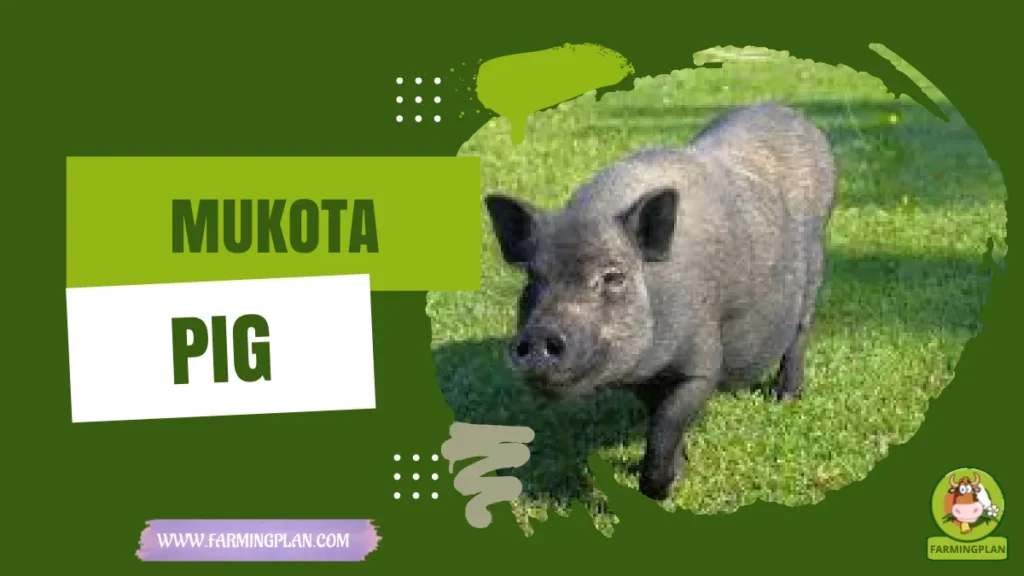The Harlequin Rabbit is a unique and eye-catching breed known for its bold color patterns and friendly personality. With its playful nature and striking appearance, it has become a favorite among pet owners and rabbit enthusiasts. This breed is not only beautiful but also makes a great family pet when given proper care, attention, and a healthy diet.
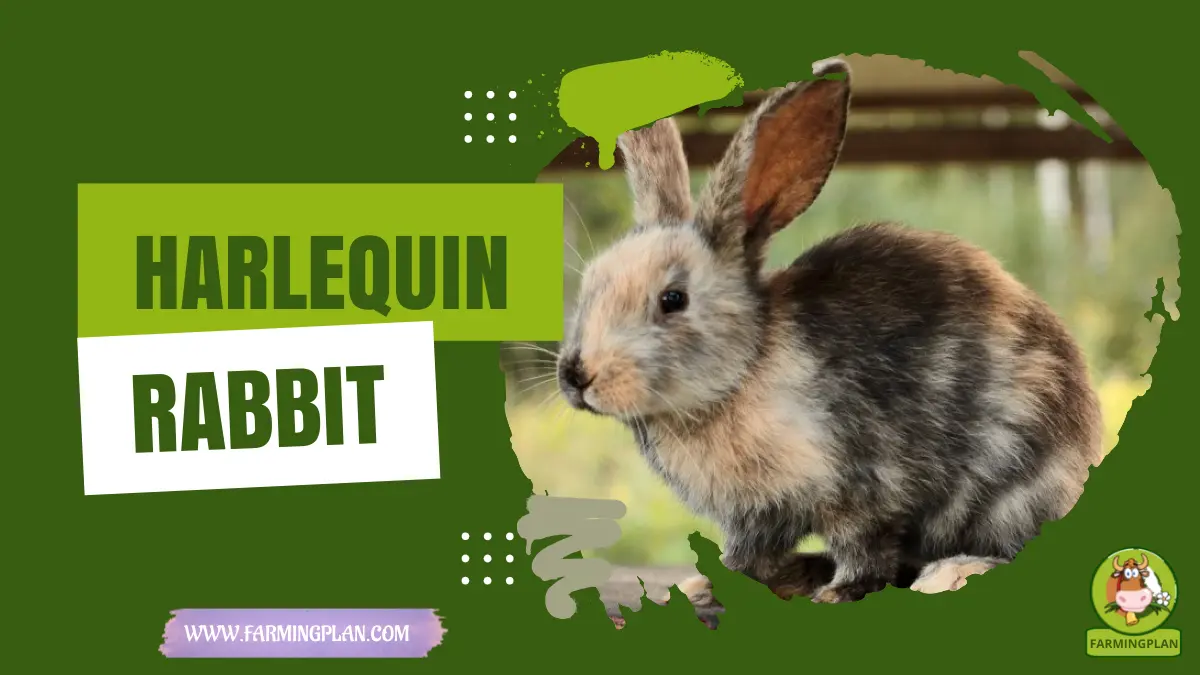
History & Origin
The Harlequin Rabbit has a rich and fascinating origin that traces back to France in the 1880s. Originally referred to as the “Japanese Rabbit” because of its striking color combinations, the breed was soon renamed “Harlequin” to better represent its playful and theatrical appearance, resembling the colorful costumes worn by jesters in European theater. This eye-catching rabbit was developed by breeding semi-wild tortoiseshell Dutch rabbits, which contributed to its distinctive bands of color and charming personality. The unique blend of alternating hues, often in golden orange and black, or magpie varieties like blue and lilac, became a hallmark of the breed and set it apart from other rabbit breeds.
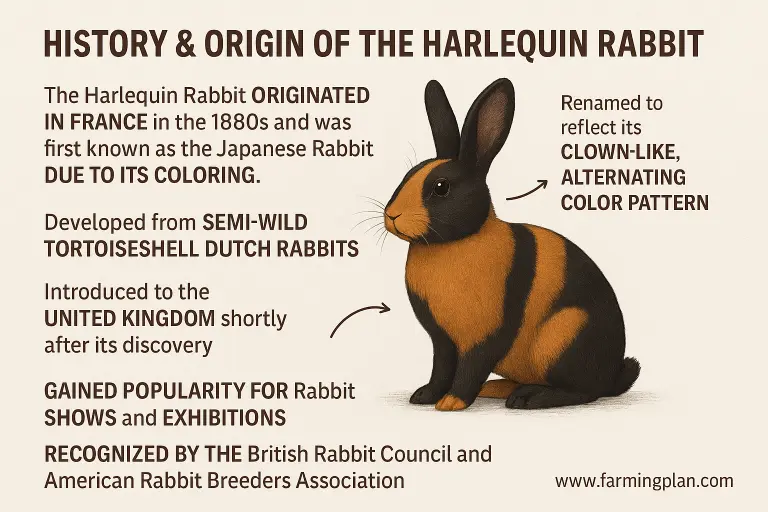
Shortly after its emergence, the Harlequin Rabbit made its way to the United Kingdom, where it quickly gained popularity in rabbit exhibitions and show circles. Recognized by both the British Rabbit Council and the American Rabbit Breeders Association, the breed cemented its status as a favorite among rabbit enthusiasts and breeders. Its distinctive appearance, show-quality color patterns, and friendly temperament helped it rise in popularity not only as a show animal but also as a beloved pet. Today, the Harlequin remains one of the most visually striking and culturally rich rabbit breeds in the world, admired for both its history and its charm.
Characteristics
The Harlequin Rabbit is best known for its distinctive color pattern, featuring bands of color alternating on the body, legs, and face. Each Rabbit typically has a discernible face split, where one side is a primary color (like black, blue, lilac, or chocolate) and the other a secondary color (usually white or golden orange). This creates an unbroken circle of color or distinct color bands, which breeders refer to as a pet-quality pattern or show-quality pattern, depending on symmetry and clarity.
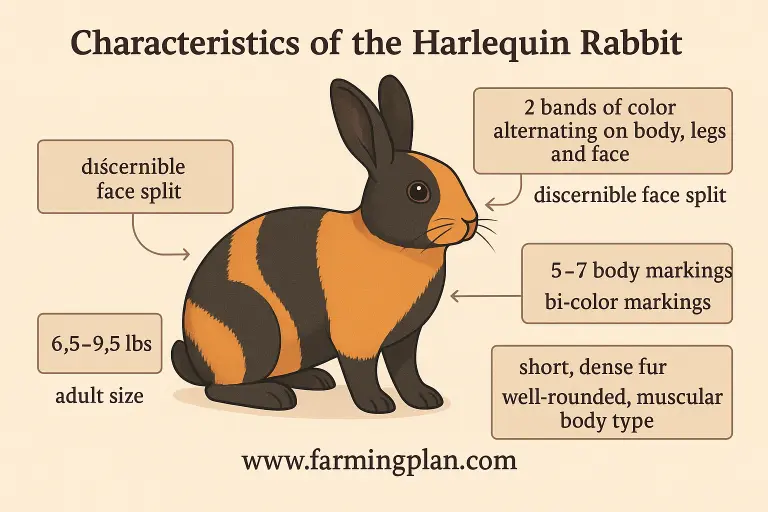
Adult Harlequins usually weigh between 6.5 and 9.5 lbs, making them an average-sized rabbit breed with a substantial, ideal weight for pet owners and breeders alike. Their type of body marking includes 5–7 body markings, and they may display Dutch-like markings or bicolor markings such as those seen in Magpie Harlequins or Japanese Harlequins.
They have short, dense fur that requires minimal grooming, and their body type is well-rounded and muscular. The Harlequin Rabbit presents itself as a robust breed featuring a unique appearance when cared for as any of its Black Magpie, Blue Magpie or other color varieties.
Nature / Temperament
The Harlequin Rabbit is a naturally social animal with a curious and playful personality. It loves interacting with humans and other rabbits, making it an excellent choice for families and first-time rabbit parents. These rabbits enjoy attention and thrive in an engaging environment where they can explore, hop around, and receive gentle handling.
Harlequins are known for their calm behavior and friendliness, making them ideal indoor rabbits or companions for children under adult supervision. If introduced properly, they do well in pairs or groups, as interactions between rabbits help reduce loneliness and stress. Their energetic personality also means they need adequate space to move around and a safe exercise space daily.
Read More: Cashmere Lop Rabbit: The Ultimate Adorable and Devoted Pet
Food & Diet
Harlequin Rabbit health depends on receiving nutritious dietary components which lead to both physical well-being and happiness. The digestive health of Harlequin Rabbits depends heavily on fresh hay which they should always have available while their diet must be high in fiber. The digestion process stays healthy because hay consumption prevents Gastrointestinal Stasis from occurring which represents a serious condition leading to death in rabbits caused by digestion problems.
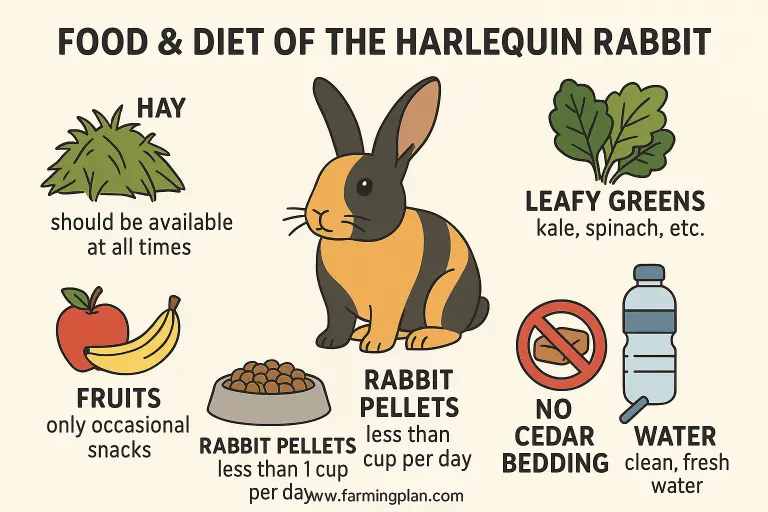
The diet of Harlequin Rabbits should incorporate leafy greens such as kale and spinach because these greens deliver vital vitamins and minerals. High-octane fruits like apples and bananas should be presented only as occasional snacks because excessive consumption can give rabbits digestive problems. Rabbit pellets must form part of the diet as a balance but their consumption should stay below one cup per day.
A Harlequin Rabbit must always have clean drinking water at its disposal and water bottles serve this purpose better by minimizing spills. Rabbits should not have cedar bedding because it generates respiratory problems along with irritation of their sensitive respiratory system. The diet of your Harlequin must contain plenty of fiber while minimizing sugar intake to maintain his optimal health condition
Usage/Purpose
The Harlequin Rabbit is primarily kept as a pet rabbit and is known for its playful and affectionate nature. Its unique color patterns and friendly demeanor make it a favorite for families, particularly those with children. Harlequins thrive in an indoor environment where they can interact with their human companions and enjoy safe outdoor time in a secure area.
While the Harlequin Rabbit has historically been bred for rabbit shows, many pet owners love them for their companionship and family-friendly traits. As a social animal, this breed enjoys being around other rabbits and pets, but it should always be introduced carefully to ensure a smooth transition.
Though less commonly used for farming purposes, some Harlequin breeders focus on the breed’s unique coat pattern for show competitions. The breed’s distinctive color schemes, including Magpie Harlequins and Japanese Harlequins, often win top prizes in exhibitions.
Read More: American Chinchilla Rabbit: A Delightful and Versatile Pet
Special Features
A distinctive color layout distinguishes the Harlequin Rabbit when compared to all other rabbit breeds. The Harlequin Rabbit stands out because its colorful bands combined with continuous color rings form an uncommon appearance that show judges find attractive. Every variation of the Harlequin from Black to Blue to Lilac Magpie demonstrates a distinct combination of colors that makes these rabbits both popular and visually striking in appearance.
The Harlequin Rabbit stands out with its muscular physque and weight measurements between 6.5 and 9.5 lbs because these features present pet owners with practical dimensions. The Harlequin Rabbit requires basic attention which includes occasional brushing since the breed needs minimal grooming to preserve its smooth fur. This breed stands out because of its great disposition toward people. These rabbits display two essential traits: their amicable personality as well as their capability to learn which establishes them as suitable pets for rabbit owners starting out with pet animals. These pets display significant affection for social activities and their playfulness attracts owners through enduring relationships between rabbits and their family members.
Read More: Lionhead Rabbit Care Guide: Raise A Happy, Healthy Bunny
Health Issues & Prevention
Like all rabbits, the Harlequin Rabbit can be prone to specific health issues that require attention and preventive care. Regular health checks are crucial to keep your Rabbit in top condition.
One of the most common health concerns for this breed is overgrown teeth. Rabbits’ teeth grow continuously, so it’s essential to ensure they have plenty of fiber in their diet (like hay) to help wear down their teeth naturally. If left unchecked, improper tooth alignment can lead to painful dental problems and difficulty eating.
Another significant issue is respiratory infections, which can occur if the Rabbit is housed in a damp or poorly ventilated environment. To prevent this, make sure your Harlequin Rabbit’s living space is clean and well-ventilated, and avoid cedar bedding, which can cause respiratory irritation. Keeping their environment free of dust and strong odors will help prevent these infections.
Rabbits are also susceptible to parasites, such as fleas or ear mites. Regular grooming sessions and health checks, including cleaning their ears, can help prevent these parasites. Additionally, watch for signs of skin issues, like white spots or irritation, which could indicate a fungal or parasitic infection.
Finally, it’s essential to monitor your Rabbit’s digestive tract. Signs of Gastrointestinal Stomatitis, such as a lack of appetite or stool production, can be life-threatening if not treated promptly. Ensure your Harlequin has access to plenty of fresh water and fiber to support its digestive health.
“Every Harlequin Rabbit Brings Joy, Color, And Unmatched Companionship To Your Home!”
Step-by-Step Pet Owner Care Guide
Caring for a Harlequin Rabbit involves providing the right environment, diet, and regular health checks to ensure a long and happy life. Here’s a step-by-step guide to help you provide the best care for your pet rabbit:
Setup the Right Living Space
Ensure your Harlequin Rabbit has a comfortable living space. A large indoor cage or rabbit hutch with enough room for movement is essential. The space should be well-ventilated, and avoid using cedar bedding, as it can irritate your Rabbit’s respiratory system. Use dust-free cat litter for their litter box. Make sure the area is safe and free from any harmful items.
Provide Adequate Exercise Space
Rabbits need regular exercise to stay healthy. Set up a safe, secure outdoor area, or create a spacious play area indoors where your Rabbit can hop around freely. Ensure the area is bunny-proofed to prevent any accidents.
Feed a Healthy Diet
Provide fresh hay as the central part of your Rabbit’s diet. Include a variety of leafy greens such as kale, cilantro, and romaine lettuce, and small amounts of fresh fruits as occasional treats. Ensure fresh water is always available, and offer a small amount of rabbit pellets to ensure nutritional balance. Avoid sugary foods, and check for signs of digestive issues such as lack of appetite or stool production.
Groom Regularly
While Harlequin Rabbits require minimal grooming, regular brushing helps maintain their coat and remove loose fur. This is especially important during shedding periods. Grooming also provides an opportunity to check for any health issues, like skin irritation or ear mites.
Schedule Regular Health Checks
Check your Rabbitrabbit’s dental health regularly, especially for signs of overgrown teeth. Ensure their living space is clean, and watch for signs of common diseases or parasites. If necessary, visit a vet for routine health checks and vaccinations.
Socialization and Interaction
Spend time daily with your Harlequin Rabbit. They love interacting with humans and can be trained to respond to their names or even perform simple tricks. If you have multiple rabbits, make sure they are introduced gradually to ensure peaceful interactions between rabbits.
FAQ
What is the lifespan of a Harlequin Rabbit?
Harlequin rabbits typically live between 5 to 8 years, with proper care and a healthy environment.
Are Harlequin Rabbits good pets for families?
Yes, their friendly and social nature makes them great companions for families, especially with children.
Do Harlequin Rabbits require special grooming?
They have a short, dense coat that requires minimal grooming, typically brushing once a week to remove loose fur.
What are common health issues in Harlequin Rabbits?
They can experience dental problems due to continuously growing teeth, gastrointestinal stasis, and ear mites.
How much exercise do Harlequin Rabbits need?
They are active and require daily playtime outside their enclosure, along with toys and tunnels to stimulate their minds.
Conclusion
The Harlequin Rabbit is a vibrant and affectionate breed, celebrated for its striking color patterns and playful demeanor. Originating from France, it has become a favorite among families and rabbit enthusiasts. With an average lifespan of 5 to 8 years, they thrive in spacious, clean environments and benefit from a diet rich in hay, fresh vegetables, and clean water. Regular grooming, exercise, and health check-ups are essential to maintain their well-being. Their sociable nature makes them excellent companions, and with proper care, they can bring joy and color to any home.

